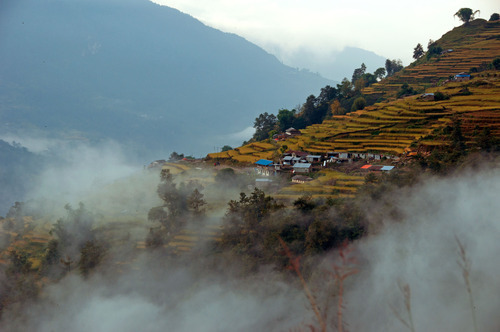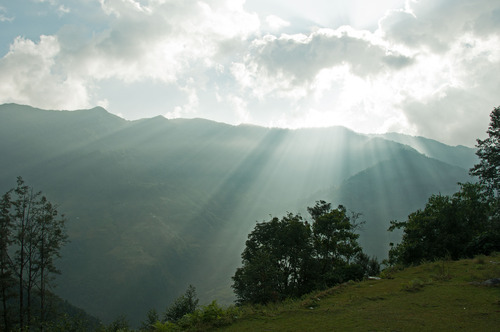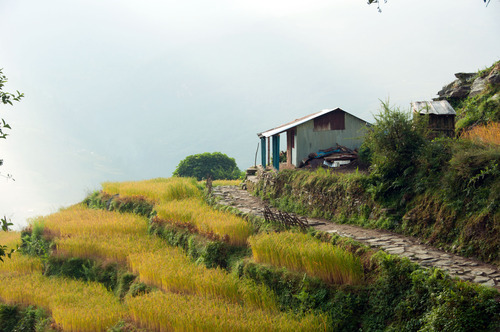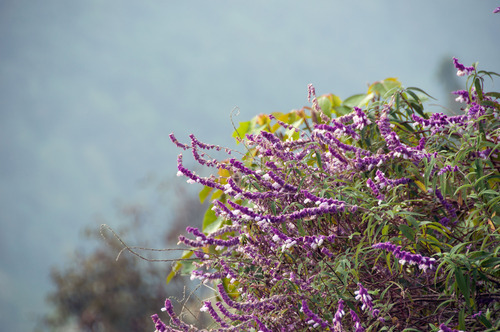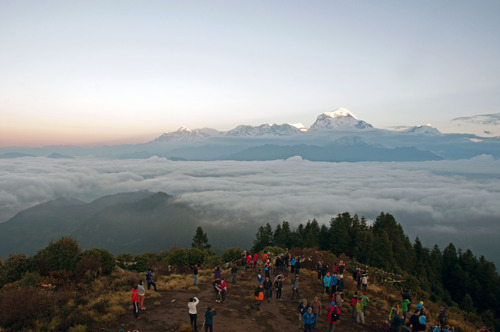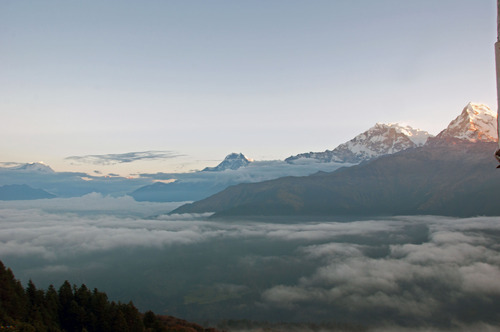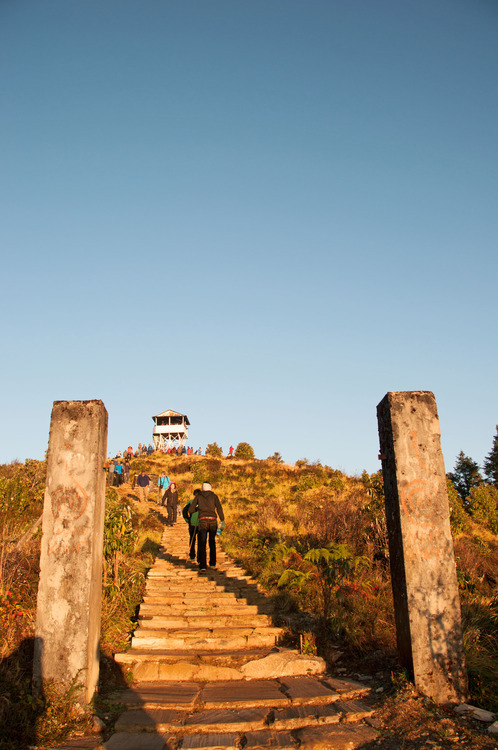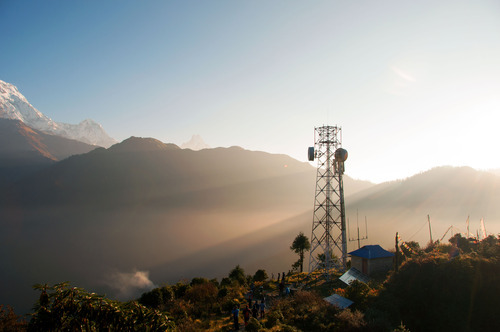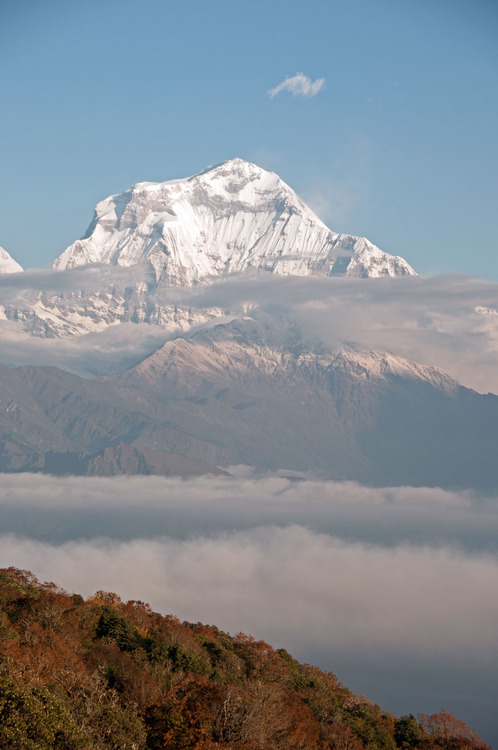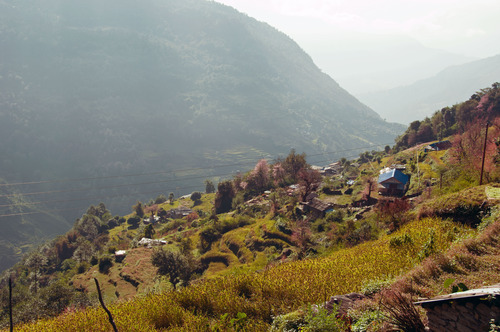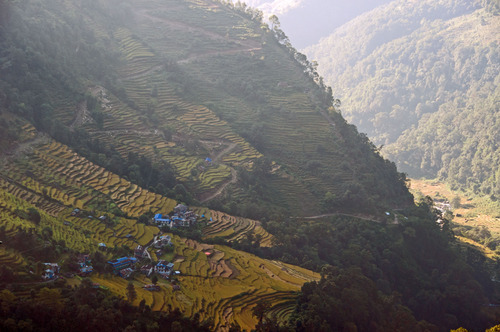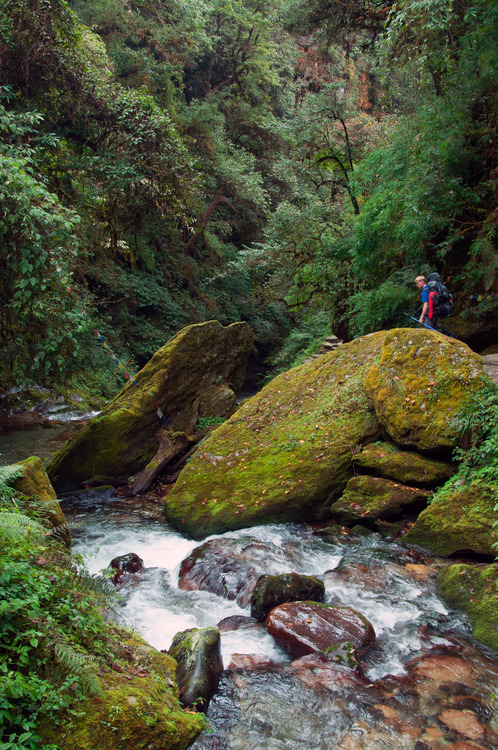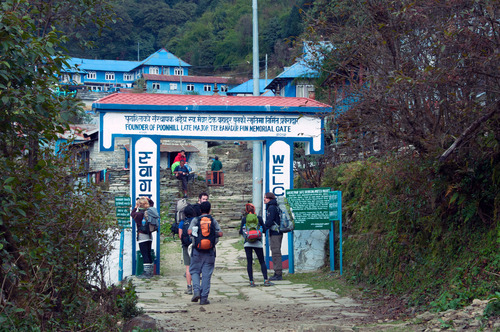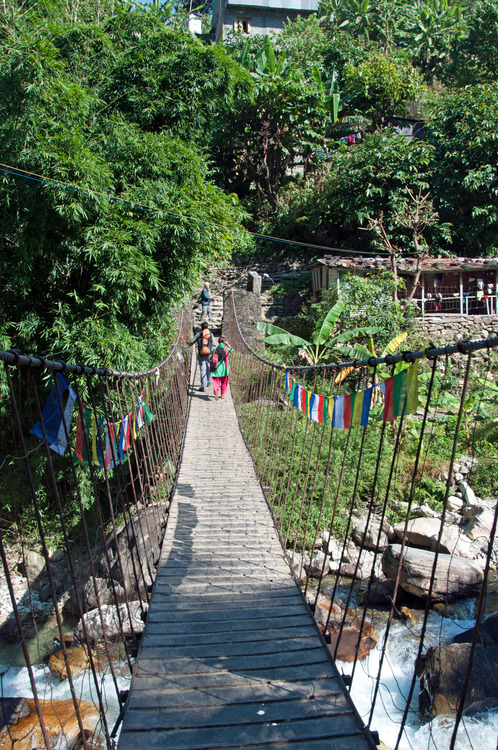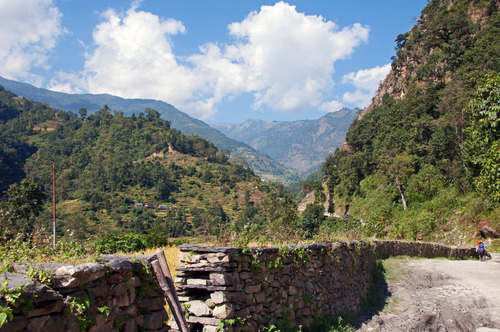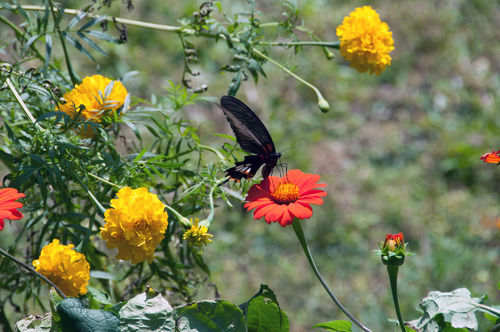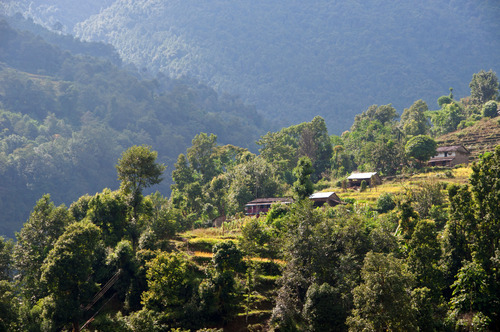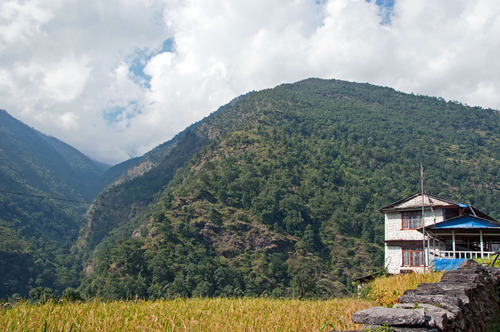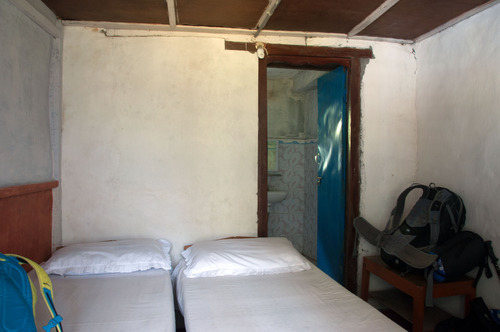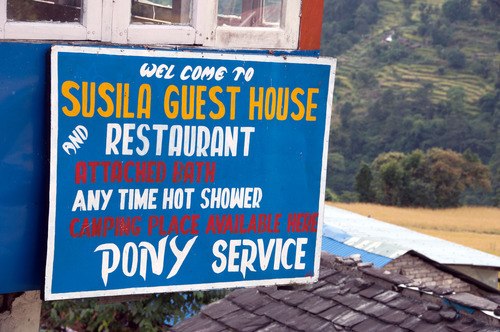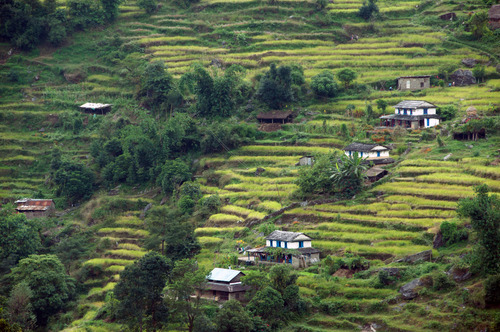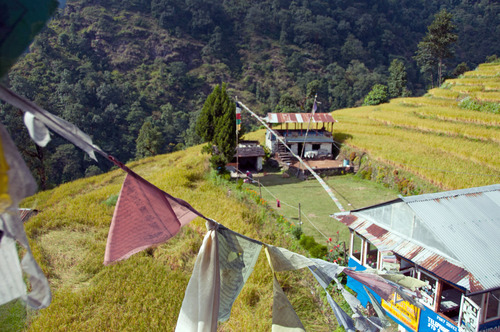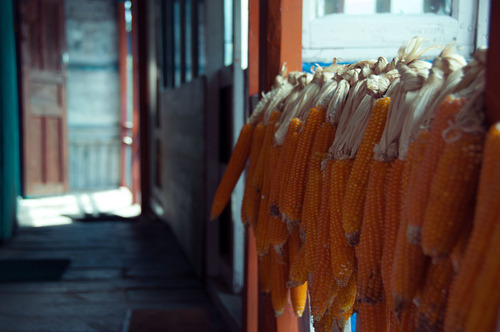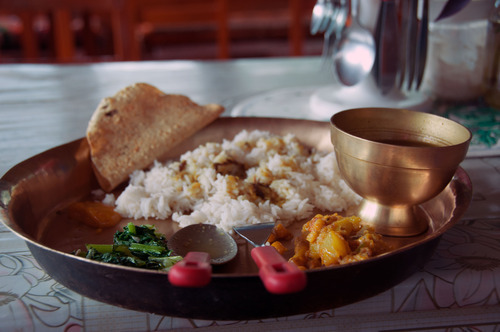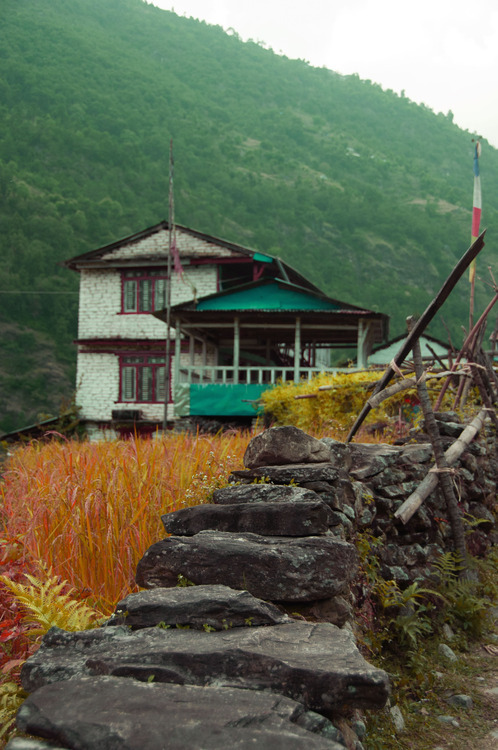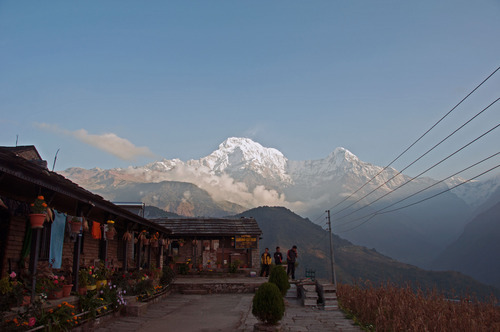

From Ghandruk, we took a very steep descent down the side of a valley, and the scenery on our way down was probably the best of the trek. We passed by numerous villages and terraces, half hidden in wisps of clouds. Bare bottomed children ran around, their faces covered in snot and tears. Women quietly harvested rice. Teenagers in neat high school uniforms headed off to school, skipping lightly down stony steps that trekkers struggle to navigate. Goats tied to poles gazed at us, their faces an inherent smile. Ponies ambled past us, their bells echoing faintly in the distance long after our encounter.
I was in photographic overdrive, trying to catch every snippet of this other world tucked away in the mountains before I have to leave. But there are things you cannot take with you, things that eyes can’t see: like the smell of grass and horse shit, the dampness of a cloud as it embraces you, that moment as you turn around a bend and face a snowy peak, so beautiful and rugged it literally tugs at your heartstrings.
And when we finally reached the bottom, when we turned the final bend, we have come full circle to our starting point. The city awaits.
xx doots

